Spring Training Week continues. Today we bring an article about training walls, courtesy of our minion COWAN!, who is also the HMFIC of Sage Dynamics. He’s going to take some shots at a few sacred cows. Let the butt hurt commence. Mad Duo
At some point in our teaching career we instructors will give a student a bias or a performance roadblock. Often we don’t even realize we are doing it. Speaking for myself, we don’t for the most part do this on purpose; rather it is a byproduct of the traditional and sometimes dogmatic training we went through and in turn pass along. Perhaps it is because we have cherry picked our own personal best results. Teaching is a difficult skill to master. Some would say it’s more difficult to master than shooting, and I would agree. Being able to relate to a student, to address their unique needs, areas of improvement and individual implicit skills requires an attention to detail that will vary from teacher to teacher.
I do not get to determine what a student needs, they do. From a neophyte who has never held a firearm to the advanced shooter, a student’s implicit knowledge and skill (or lack thereof) show me what areas they need to work on. Their personal life and reason for training also tell me what areas they need to focus on. All students come to me with a basic knowledge; simple awareness, aptitude, and natural shooting talent that I must identify and adapt to. Their physical ability, coordination, mindset, lifestyle, occupation and many other concerns shape the individual teaching approach. The overall instruction must be adaptable as possible to provide the best level of instruction and, more importantly, assure actual learning.
Each student is going to learn differently, generally in a visual, audible or kinesthetic way; often it’s a combination of all three. I have to be aware of what they are and aren’t getting; I can demonstrate techniques for eight hours, visually affirm a student can perform that which I demonstrated, but does that mean they learned it or memorized it?
Those are two different things.
Memorization is the lowest level of education. It will teach you how to turn a screwdriver. It will not teach you what to do with the screwdriver. It does not teach you that a screwdriver can also be used as a lever, a pry, a punch or a correcting edge. Memorization is If A, do B. It is the first step in education, an important step, but it is not the final step. If someone memorizes a technique, are they demonstrating knowledge or procedure? To put it another way; knowledge of Google is not knowledge of everything on Google.
We have to use guidelines, the so-called tasks, conditions and standards or explanation, demonstration, understanding and adaptation. A class is organized to reach milestones, to show a student and then verify that they can perform. It doesn’t end there, or at least it shouldn’t. Some of us have been sold on the lunch line method of training; we cover the topic, field any questions, then watch the student perform the task, make corrections if necessary and move to the next point. We may show a variation on a technique; a different hand placement, a different posture, a different reload but it can be rigid and may seriously limit the ability for the student to display implicit knowledge if they possess it.
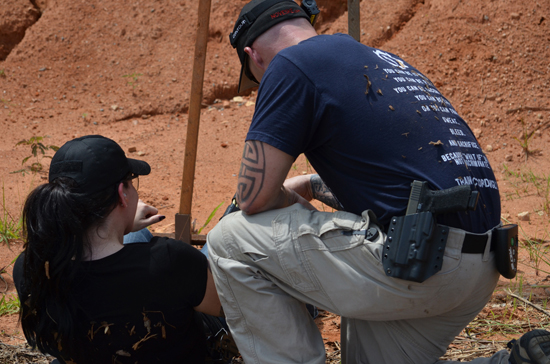
Some skills are not open to much variation; sight alignment, sight picture, trigger control and others. However there are some that can be taught in different ways (movement, shot placement, follow through, etc) and allow the student to show the instructor what they already know. This implicit knowledge is a foundation we should be building on. If it’s correct, efficient, safe and adaptable, it needs nurturing. The ideology of instructors shouldn’t be one of an assembly line. We shouldn’t be building mechanical repetition without understanding of purpose. We shouldn’t be scripting skills that leave no room for the student to apply their existing knowledge and we certainly should not be pre-determining their ultimate ability based on anecdotal “laws of averages.”
Instructional awareness is an understanding that each student is going to be different. It is allowing them to use skills they already possess without prejudice. Outside of a realistic reason why a student shouldn’t do something (safety or inefficiency) there is little justification for erecting a performance wall in front of them. This is particularly true of that wall is made of nothing but lowest-denominator expectations. Just because an instructor cannot perform a certain skill does not mean that their student is not capable of it. This raises an interesting side topic; If the instructor cannot perform a skill well, should they be attempting to teach it? Are they acting responsibly if they are advising against it?
An example…Don’t cross your feet when you move. Movement is integral to realistic training. We have to teach our students to move, when it’s wise to move and why. We also need to realize that the average adult has been walking since about 15 months old and comes to us with nearly two (or more) decades of personal locomotive experience. This means they know how they move far better than we do. The guidance, Don’t cross your feet when you move is a presupposition based on some law of averages that someone, somewhere, inserted into the minds of trainers. It spread like a cancer.
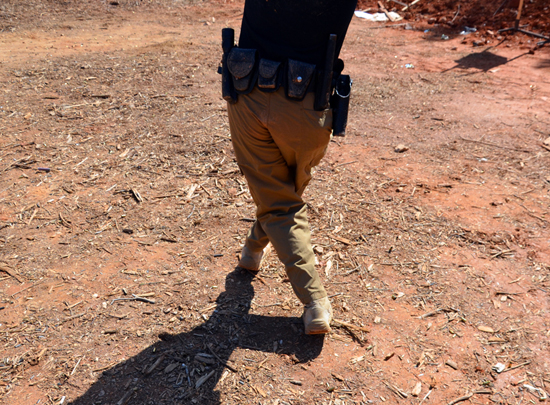
Imagine the raised eyebrows from more athletic students who already move very well in a strafing movement by crossing their feet based on pre-existing practice. What about the stresses of a use-of-force? Is that the reason its frowned upon? With the heart rate as a speedometer, we see professional and amateur athletes move in this manner all the time. What’s even more telling, if you poke around the internet enough and you can find more than a few videos of violent encounters where an officer or a citizen did what they weren’t supposed to do and moved sideways by crossing their feet. A student’s personal and honest evaluation of their own abilities is a better performance gauge than an instructor’s prejudice.
Head shots, the best possible way to incapacitate a violent human in the shortest (sometimes instant) period of time are not given the attention they deserve. If it taught at all, the instruction is little more than a head shot is difficult (which is true). However, head shots in gunfights are made intentionally by shooters who have taken it upon themselves (or had quality instruction) to develop the skill to do so. This specific targeting has context that must be attached to it, but the approach of mentioning headshots or just incorporating the action into a drill or two is insufficient. It does not let the student make the personal and informed decision whether they can make a headshot under stress at a reasonable range.
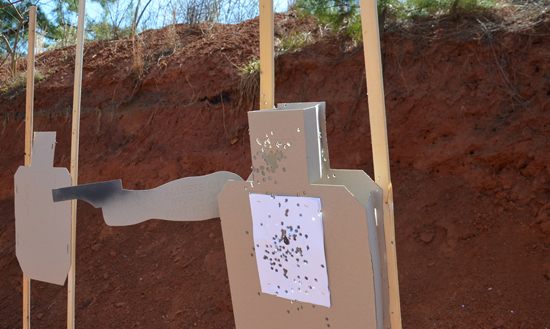
Since skill is personal, I have no place as an instructor to pre-determine what my class will be capable of, or to dissuade them from prudent targeting if they
are demonstrating the skill to do so. Offering advice and suggestions based on experience about the reality of precise marksmanship under stress is a far cry different from wholesale discouragement based on some academic meme that it’s not realistic based on….what? You can miss a headshot at 5 feet; the margin of error is small. The ability for a violent person to harm you at 5 feet is greater than at 10 or 20 or 50. Given this compression of time and a need to stop them as quickly as possible, shouldn’t an intentional head shot be an option? Is your performance really going to be degraded so much by the stress of a violent encounter that you can’t perform such a generally precise shot?
With quality training and practice that focuses on maximum realism, the student can answer that question themself instead of letting someone else dictate it for them. Conditions must be realistic and they must be encouraged to do so. If we instructors don’t help students realize where their performance excels and where it needs improvement based on the reality of what we are training them to do, we are performing a great and lasting disservice. Each skill we teach may well be passed along to a family member or friend, and we will have no control over its delivery or context. Each skill we fail to teach based on preconceptions is just as damaging.
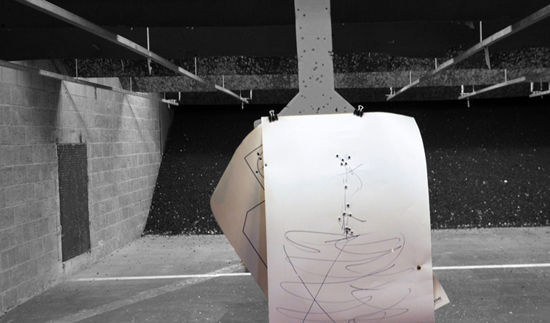
Context is everything. Research as an instructor is everything. If we are going to speak against a skill, a technique or a point of aim, we should have an informed opinion based on fact, not opinion.
Being an ambidextrous shooter was not natural to me; I was born left handed. The handgun always felt natural in my left whereas the rifle and shotgun felt more natural when controlled from the right. It took good instruction to teach me to use weapons with either hand. For teaching this was important, as students are likely to be right handed though this is not guaranteed. We started with weak hand then off hand and finally support hand as the terminology for a very important skill. Being able to shoot with either hand maximizes the use of cover and the exploitation of angles. Sure, its touched on for handgun with wounded arm drills but the usual opinion is that switching shoulders with the rifle is important, whereas switching hands with the handgun using a two handed grip is not.
Let’s say that transferring my handgun to my left hand for a left side exposure from behind cover would allow me to expose 4-6 inches less of myself , or that using the handgun in my left hand for a left side doorway would allow me to engage a threat 2-6 degrees sooner as I pie the angle, and do so from a more stable stance, would that not be an advantage. The pistol can be offset to a shoulder using an asymmetrical grip, providing the same advantage as with the rifle, so there is an advantage and if there is an advantage, why is it not pressed more? Is it because the instructor can’t do it, can’t see the advantage it may provide or hasn’t considered it? Or is it perhaps a combination of the three? Maybe because they consider it an advanced skill? Every skill is advanced to the beginner. If there is value in it and it has been demonstrated that shooters can and have learned to perform the skill, we should be teaching it. There is actually no value in putting up a performance wall because its one we can’t climb. Perhaps we should even ask the student if they see value in it and if so, show them how.
Now my Mea Culpa, as I am not innocent in this. I don’t like using the slide release on handguns for two reasons; I’m primarily left handed and because of this the slide release has historically been on the wrong side of the handgun (for me) for thumb manipulation. My second reason is that I once witnessed a shooter fail to close the slide using the slide release twice in a row under real world stresses. I had one real life example and my personal preference and then there was the data. Articles here and there that focused on fine motor skills, gross motor skills and how the slide release is a fine motor skill (which degrade under stress) whereas using the whole hand to rack the slide to chamber a round is a gross motor skill. Since I had seen it happen I ran with the idea, even wrote about it, never once considering that this may be a personal prejudice and a performance wall. After all, the magazine release and the trigger are fine motor skills.
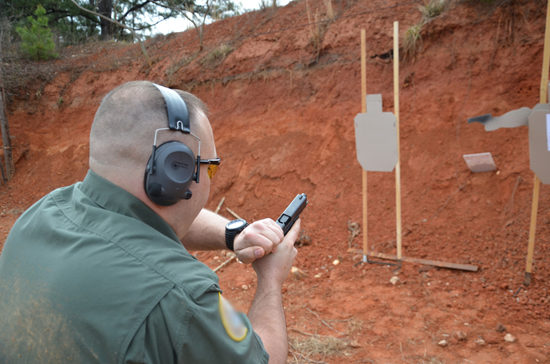
Of course I could (and did) argue the point by saying that by not using the slide release you are reducing the number of fine motor skills used on the gun (which is true). What isn’t true is that racking the slide release is faster (it hardly is) or most efficient for movement and grip. However, for quite some time I sold it that way. I came to my senses after a new shooter worked the slide release with little practice faster than I could use the slide rack method with over a decade of practice. I had been to a degree steering people wrong.
Even taking this into consideration I wasn’t sold on the idea. I began asking other instructors, LEOS, students, anyone I knew to have been involved in a shooting where a handgun was used. The response wasn’t unanimous, but it was obvious and I had missed it. So if a student demonstrates they can efficiently operate the slide release (and their handgun is set up for it) and I have seen evidence or been given credible evidence second hand of it working under stress, what business did I have telling students not to do it? None. I can and should explain the possibility of a failure, discuss fine motor skills and then show that both methods have their merits and leave the decision to the student.
This writing isn’t to shine a spotlight on any one or any group of teachers. If you happen to feel it upon you then perhaps you should do what I did and check your premise for why it feels personal. As instructors we have a responsibility to produce safe, efficient and ethical shooters. We must give the best that we have and guard no knowledge which may be of benefit to the student. With this in mind, we have no place arbitrarily creating performance roadblocks based on personal prejudice, isolated examples or inflexible ideology. Some things are written in stone, but everything else is open to ability and dedication. All safe and reasonable actions are acceptable. If the talent exists elsewhere, the student can achieve it. We all start from incompetence and begin the never ending journey to perfection.
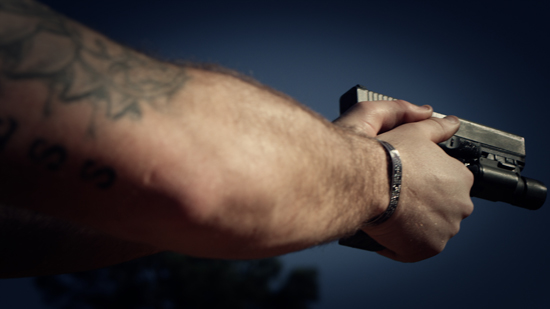
For me, humility is the most important pill to swallow and it has to be chased with a shot of objectivity. Once I can see that I, not gravity or physics or human capability, built the wall, it’s my job to tear it down so that when the student reaches that point, they will never know the wall was there.
COWAN!
Mad Duo, Breach-Bang & CLEAR!

&nb
sp;






0 Comments